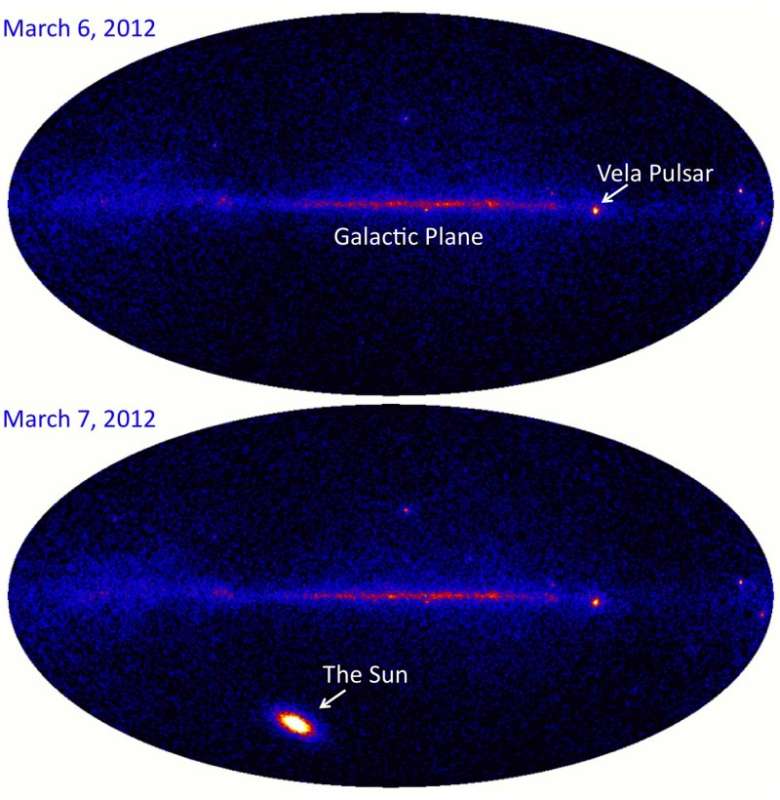Explanation: What shines in the gamma-ray sky? The answer is usually the most exotic and energetic of astrophysical environments, like active galaxies powered by supermassive black holes, or incredibly dense pulsars, the spinning remnants of exploded stars. But on March 7, a powerful solar flare, one of a series of recent solar eruptions, dominated the gamma-ray sky at energies up to 1 billion times the energy of visible light photons. These two panels illustrate the intensity of that solar flare in all-sky images recorded by the orbiting Fermi Gamma-ray Space Telescope. On March 6, as on most days, the Sun was almost invisible to Fermi's imaging detectors. But during the energetic X-class flare, it became nearly 100 times brighter than even the Vela Pulsar at gamma-ray energies. Now faded in Fermi's view, the Sun will likely shine again in the gamma-ray sky as the solar activity cycle approaches its maximum.
1999 2000 2001 2002 2003 2004 2005 2006 2007 2008 2009 2010 2011 2012 2013 2014 2015 2016 2017 2018 2019 2020 2021 2022 2023 2024 2025 |
Yanvar' Fevral' Mart Aprel' Mai Iyun' Iyul' Avgust Sentyabr' Oktyabr' Noyabr' Dekabr' |
NASA Web Site Statements, Warnings, and Disclaimers
NASA Official: Jay Norris. Specific rights apply.
A service of: LHEA at NASA / GSFC
& Michigan Tech. U.
|
Publikacii s klyuchevymi slovami:
Sun - flare - Solnce - gamma-izluchenie - Solnechnaya vspyshka - gamma ray
Publikacii so slovami: Sun - flare - Solnce - gamma-izluchenie - Solnechnaya vspyshka - gamma ray | |
Sm. takzhe:
Vse publikacii na tu zhe temu >> | |
